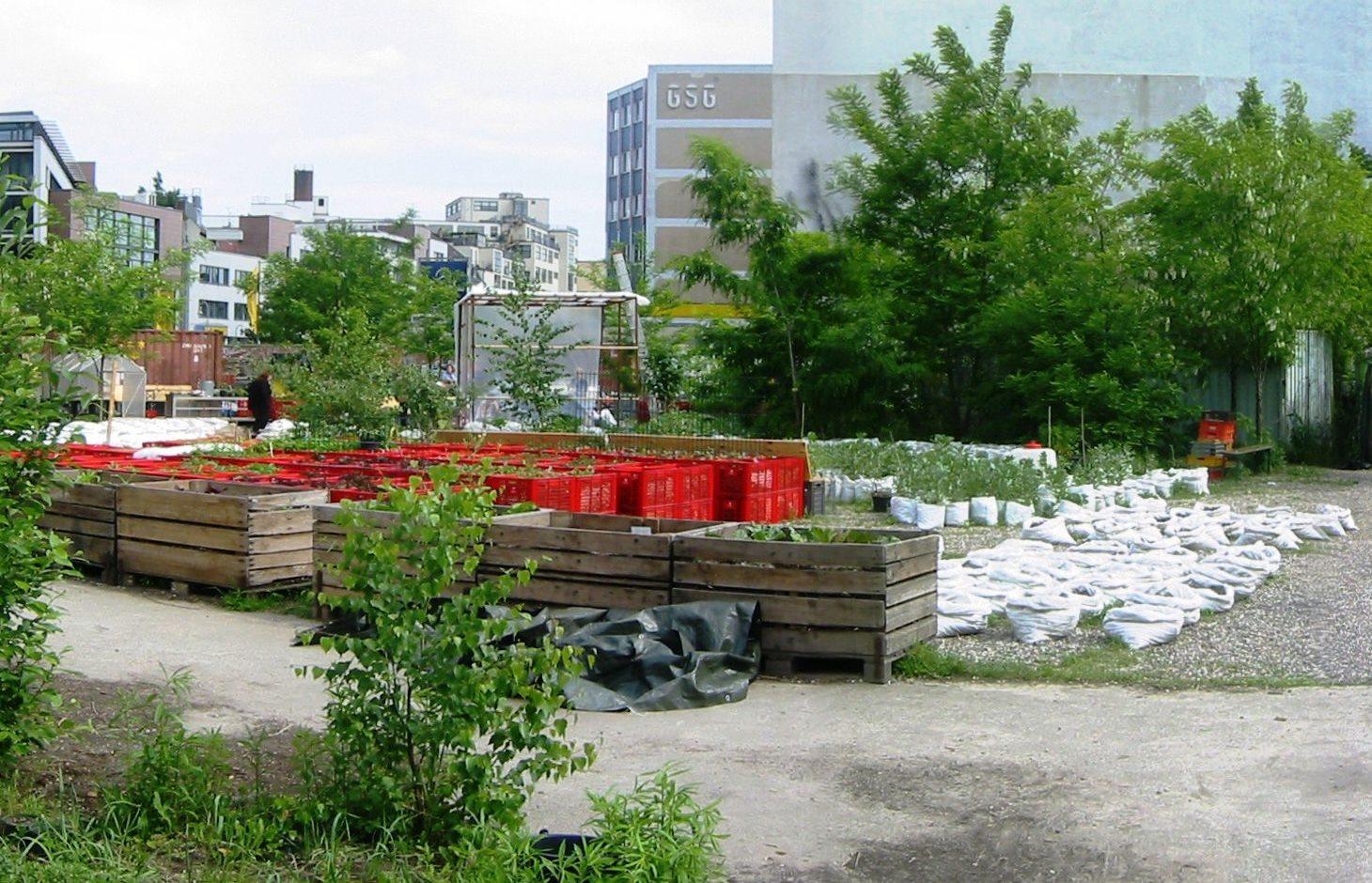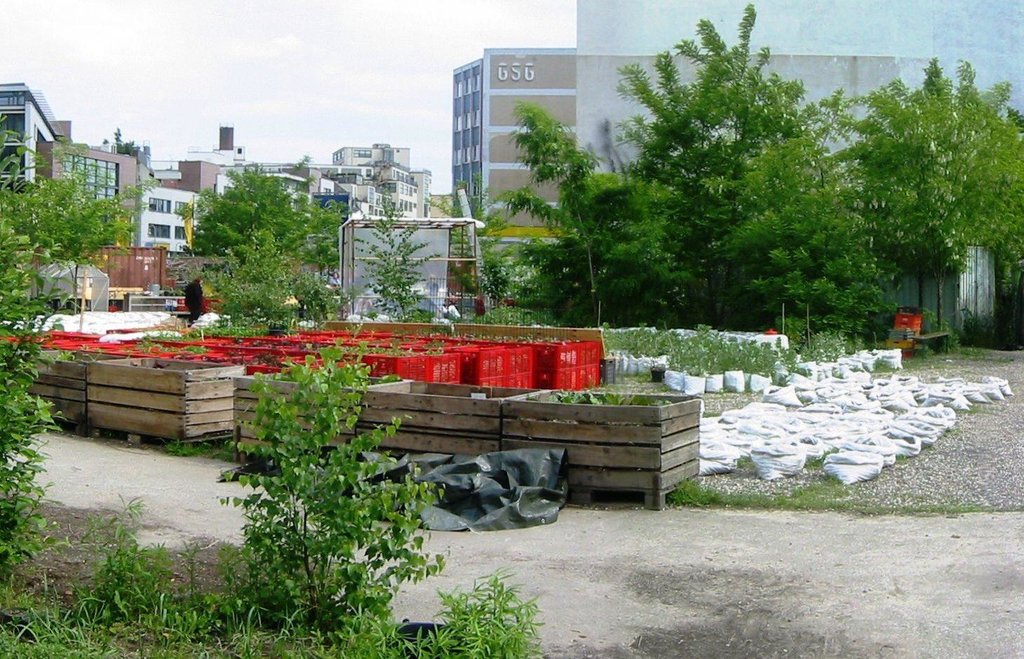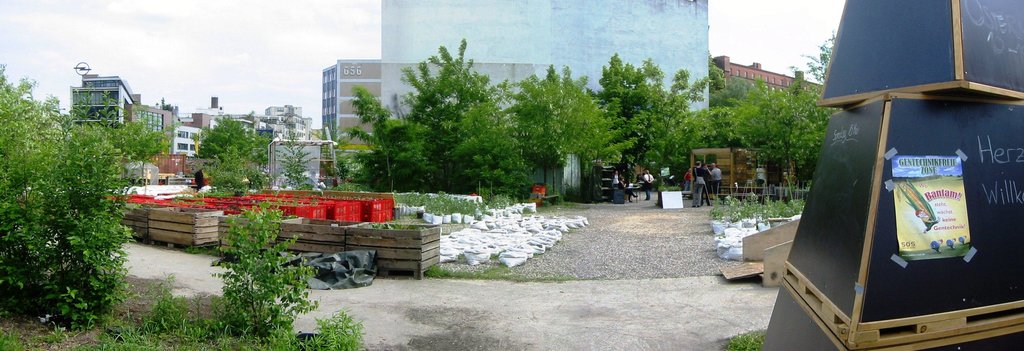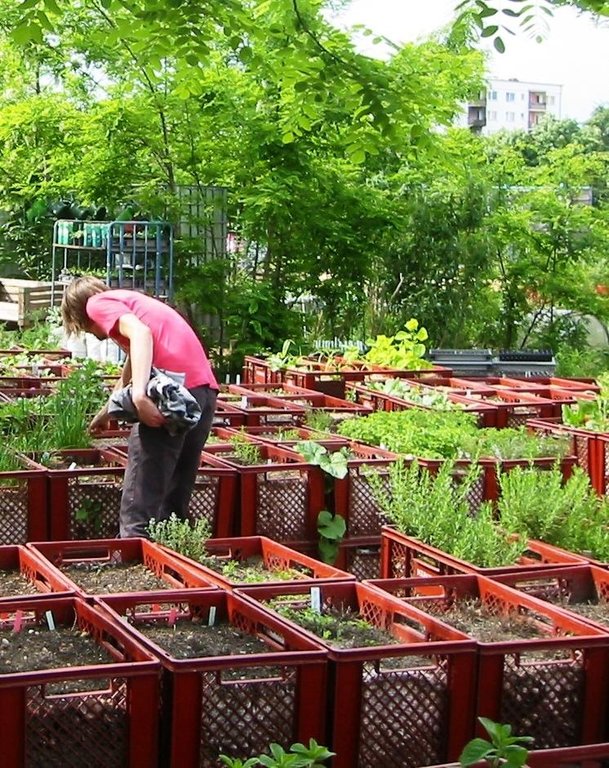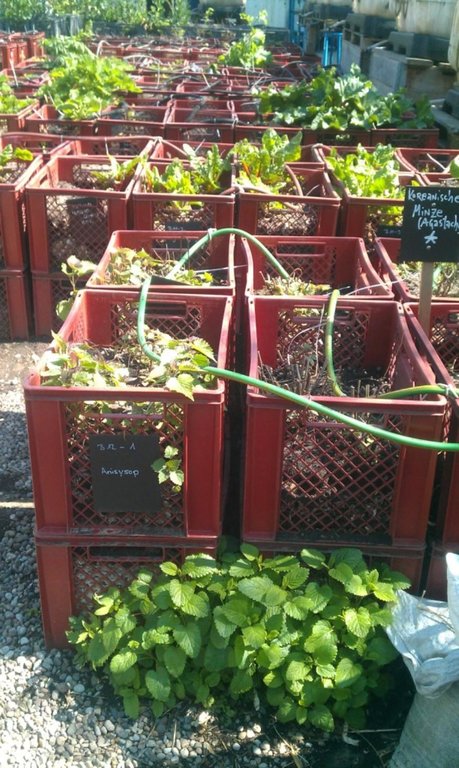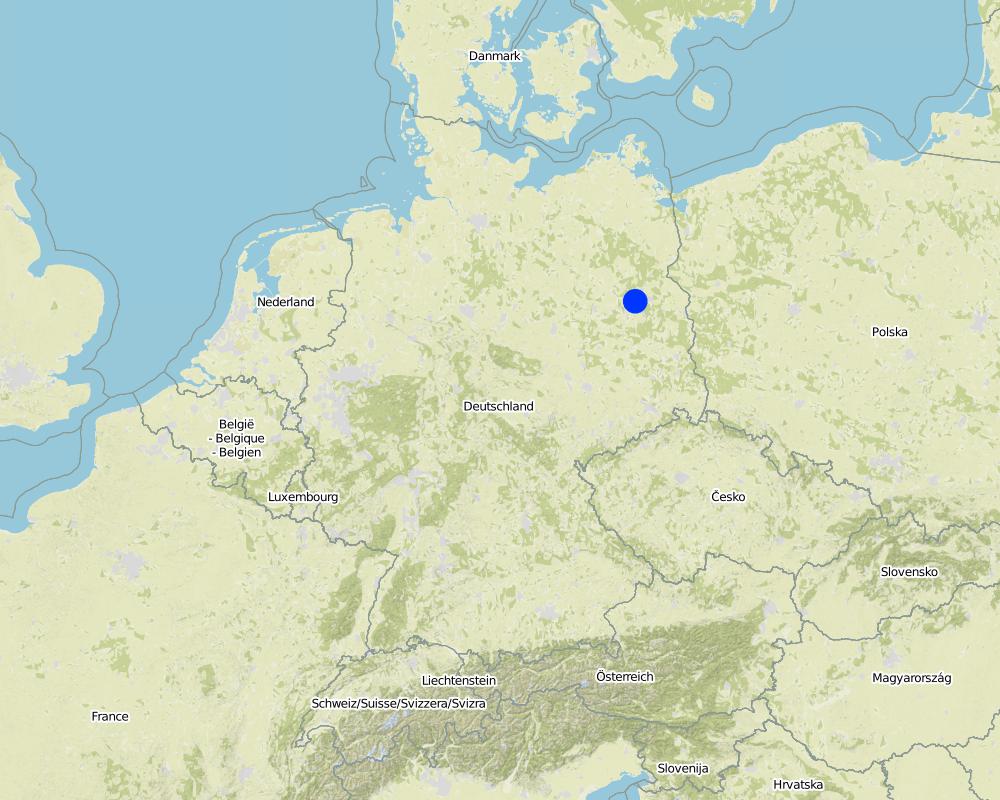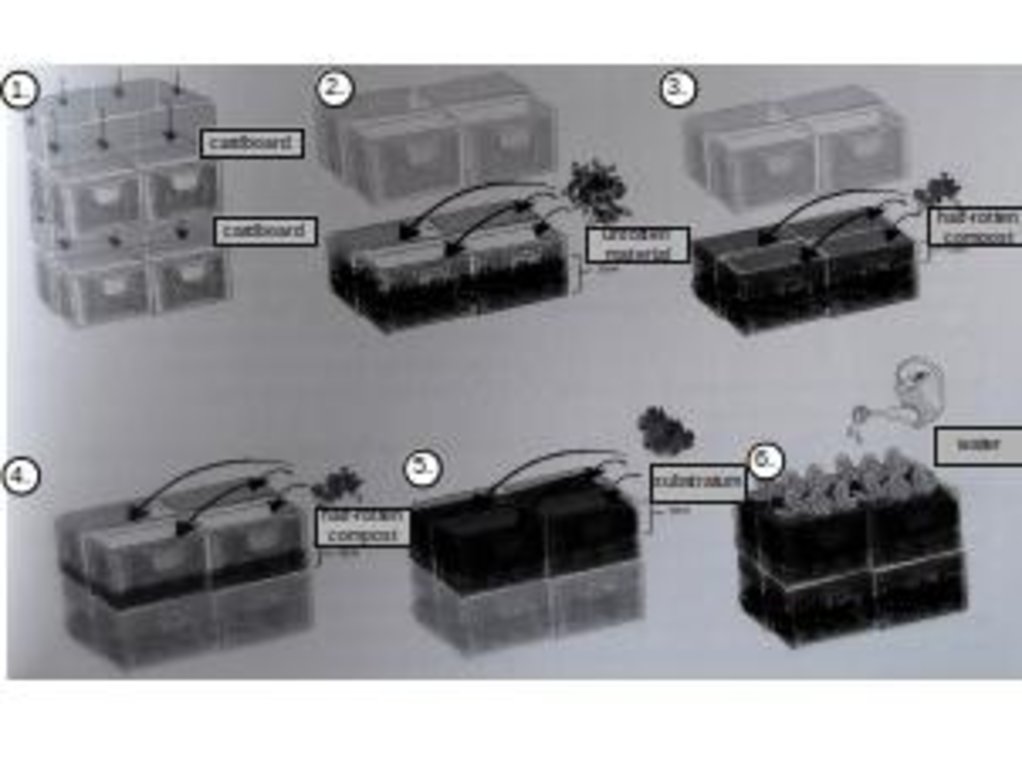Mobile cultivation beds [Alemania]
- Creación:
- Actualización:
- Compilador: Peter Kirch
- Editor: –
- Revisores: Fabian Ottiger, Alexandra Gavilano
technologies_1678 - Alemania
Visualizar secciones
Expandir todo Colapsar todos1. Información general
1.2 Detalles de contacto de las personas de referencia e instituciones involucradas en la evaluación y la documentación de la Tecnología
Persona(s) de referencia clave
usuario de la tierra:
Shaw Robert
Nomadisch Grün gemeinnützige GmbH
Alemania
Bärich Christian
Especialista MST:
Nombre de la(s) institución(es) que facilitaron la documentación/ evaluación de la Tecnología (si fuera relevante)
Nomadisch grün GmbH - AlemaniaNombre de la(s) institución(es) que facilitaron la documentación/ evaluación de la Tecnología (si fuera relevante)
Humboldt Universität zu Berlin (HU Berlin) - Alemania1.3 Condiciones referidas al uso de datos documentados mediante WOCAT
El compilador y la/s persona(s) de referencia claves aceptan las condiciones acerca del uso de los datos documentados mediante WOCAT:
Sí
2. Descripción de la Tecnología MST
2.1 Breve descripción de la Tecnología
Definición de la Tecnología:
Mobile vegetable cultivation system for urban areas with "baker boxes" as main elements.
2.2 Descripción detallada de la Tecnología
Descripción:
The main technology applied in the urban gardening project "Princess gardens" can be described as mobile vegetable culitivation system based on the use of "baker boxes".
"Baker boxes" are plastic boxes (size: average area of 40 cm x 60 cm x 35 cm) made out of heat-resistant materials, which do not contain softeners. The bottom part as well as the side parts are formed in a grid pattern (holes of 1cm³ size).
For the vegetable production, cultivation units ("box towers" ) are built out of two boxes by placing them on top of each other. The lower box is filled with organic material (composition of the material like in a compost) and the upper box is filled with garden mould (or other earth material suitable for cultivation). To prevent the washing out of earth material through the grid pattern, carton is put on the bottom as well as on the side walls of the upper box.
During a period of time (length can vary from 1 to 3 years) the upper box can be cultivated according to the principles of "good practise" (e.g. crop rotation). During this time, the lower box serves as compost. In the course of each year this box is checked if the ongoing decomposition processes have lead to the creation of free space in the box. In this case, organic material needs to be refilled.
In the end of the 1-3 years-cultivation period the upper box is emptied and the contained earth material can be used for purposes such as landscaping. The box is then filled with organic material and switched with the lower box, which should contain "ready to cultivate"-compost material. The cultivation can then be restarted.
Purpose of the Technology: The purpose of the technology is to allow cultivation on sealed or contaminated soils. Through the use of the box towers as cultivation units the roots of the plants never get in touch with the soil. While the main rooting zone is to be found in the upper box, deeper rooting plants can grow down to 70 cm into the lower box without reaching the soil in place.
Another purpose of the technology is to create a mobile cultivation system. If needed, the boxes can be easily moved away even during the vegeation period.
Last but not least, the technology has the purpose to create a space, where knowledge sharing on a practical basis regarding the topics e.g. agriculture, sustainability and health can take place.
Establishment / maintenance activities and inputs: For the establishment of the technology first and foremost a sufficient number (depending on the size of the gardening area) of "baker boxes" is needed.
Maintenance activities consist of refilling the lower box with organic material.
This is also true for the required inputs.
Natural / human environment: The environment is strongly influenced by humans, as the first urban structures in this area already were established about 200 years ago. Regarding the topic soil this led to the conversion of the natural soils in place to Technosols.
2.3 Fotografías de la Tecnología
2.5 País/ región/ lugares donde la Tecnología fue aplicada y que se hallan comprendidos por esta evaluación
País:
Alemania
Región/ Estado/ Provincia:
Berlin
Especifique la difusión de la Tecnología:
- distribuida parejamente sobre un área
Si la Tecnología se halla difundida homogéneamente a lo largo de un área, especifique el área que cubre (en km2):
0,006
Si se desconoce el área precisa, indique el área aproximada cubierta:
- < 0.1 km2 (10 ha)
Comentarios:
Total area covered by the SLM Technology is 0,006 km2.
Map
×3. Clasificación de la Tecnología MST
3.2 Tipo(s) actuales de uso de la tierra donde se aplica la Tecnología

asentamientos, infraestructura
- Asentamientos, edificios
- Tráfico: caminos, rieles
Comentarios:
Major land use problems (compiler’s opinion): The major land use problem can be addressed as a lack of cultivation plots within the urban areas. This is due to the fact that the soils are to a great extent sealed or contaminated.
As a result in the urban area there is also a lack of pratical learning areas which relate to the topics agriculture and soils.
Major land use problems (land users’ perception): As major land use problems the cultivation circumstances are regarded. This inculdes the topics of destroyed natural soil fertility and a lack of water infiltration into the ground.
Constraints of settlement / urban
Constraints of infrastructure network (roads, railways, pipe lines, power lines)
Number of growing seasons per year: 1
Longest growing period in days: 200Longest growing period from month to month: April to October
3.5 Grupo MST al que pertenece la Tecnología
- Cultivation on sealed or contaminated soils
3.6 Medidas MST que componen la Tecnología

medidas estructurales
- S11: Otros

medidas de manejo
- M6: Manejo de desperdicios (reciclado, reutilización o reducción)
Comentarios:
Main measures: structural measures, management measures
Specification of other structural measures: creation of cultivation plots
3.7 Principales tipos de degradación de la tierra encarados con la Tecnología

deterioro físico del suelo
- Pk: desmoronamiento y encostramiento
- Pu: pérdida de la función bioproductiva a causa de otras actividades
Comentarios:
Main type of degradation addressed: Pk: sealing and crusting, Pu: loss of bio-productive function due to other activities
Main causes of degradation: urbanisation and infrastructure development (1 sealing (foundations of buildings were constructed in the area))
Secondary causes of degradation: population pressure (as a main cause for urbanisation), inputs and infrastructure: (roads, markets, distribution of water points, other, …) (need for public services in the city), governance / institutional (urban planning in the city)
3.8 Prevención, reducción o restauración de la degradación de la tierra
Comentarios:
Main goals: rehabilitation / reclamation of denuded land
Secondary goals: prevention of land degradation, mitigation / reduction of land degradation
4. Especificaciones técnicas, actividades de implementación, insumos y costos
4.1 Dibujo técnico de la Tecnología
Especificaciones técnicas (relacionadas al dibujo técnico):
edited by Peter Kirch on the basis of Daniel Müller/dkmnews in „Prinzessinengärten- Anders gärtnern in der Stadt“, Nomadisch Grün (Hg.),Dumont Buchverlag, Köln, 2012, page. 115
Location: Berlin. Germany
Date: 08.10.2015
Technical knowledge required for land users: moderate
Main technical functions: increase of biomass (quantity), promotion of vegetation species and varieties (quality, eg palatable fodder), spatial arrangement and diversification of land use
Structural measure: boxes
Spacing between structures (m): various
Depth of ditches/pits/dams (m): 0,35
Width of ditches/pits/dams (m): 0,4
Length of ditches/pits/dams (m): 0,6
Construction material (other): plastic (food-safe)
Change of land use type: urban area to urban gardening area
Layout change according to natural and human environment: area is limited through infrastructure elements (roads) and buildings.
Autor:
Peter Kirch
4.2 Información general sobre el cálculo de insumos y costos
otra / moneda nacional (especifique):
Euro
Si fuera relevante, indique la tasa de cambio de dólares americanos a la moneda local (ej. 1 U$ = 79.9 Reales Brasileros): 1 U$ =:
0,9
4.3 Actividades de establecimiento
| Actividad | Momento (estación) | |
|---|---|---|
| 1. | putting boxes in place |
4.7 Factores más determinantes que afectan los costos:
Describa los factores más determinantes que afectan los costos:
Costs are affected by the wages for the employees and the rent of the plot
5. Entorno natural y humano
5.1 Clima
Lluvia anual
- < 250 mm
- 251-500 mm
- 501-750 mm
- 751-1,000 mm
- 1,001-1,500 mm
- 1,501-2,000 mm
- 2,001-3,000 mm
- 3,001-4,000 mm
- > 4,000 mm
Zona agroclimática
- Sub-húmeda
Thermal climate class: temperate
5.2 Topografía
Pendientes en promedio:
- plana (0-2 %)
- ligera (3-5%)
- moderada (6-10%)
- ondulada (11-15%)
- accidentada (16-30%)
- empinada (31-60%)
- muy empinada (>60%)
Formaciones telúricas:
- meseta/ planicies
- cordilleras
- laderas montañosas
- laderas de cerro
- pies de monte
- fondo del valle
Zona altitudinal:
- 0-100 m s.n.m.
- 101-500 m s.n.m.
- 501-1,000 m s.n.m
- 1,001-1,500 m s.n.m
- 1,501-2,000 m s.n.m
- 2,001-2,500 m s.n.m
- 2,501-3,000 m s.n.m
- 3,001-4,000 m s.n.m
- > 4,000 m s.n.m
5.3 Suelos
Profundidad promedio del suelo:
- muy superficial (0-20 cm)
- superficial (21-50 cm)
- moderadamente profunda (51-80 cm)
- profunda (81-120 cm)
- muy profunda (>120 cm)
Textura del suelo (capa arable):
- áspera/ ligera (arenosa)
Materia orgánica de capa arable:
- baja (<1%)
Si se halla disponible, adjunte una descripción completa de los suelos o especifique la información disponible, por ej., tipo de suelo, pH/ acidez de suelo, capacidad de intercambio catiónico, nitrógeno, salinidad, etc. :
Soil fertility is very low
Soil drainage/infiltration is poor
Soil water sotrage capacity is very low
5.4 Disponibilidad y calidad de agua
Agua subterránea:
5-50 m
Disponibilidad de aguas superficiales:
bueno
Calidad de agua (sin tratar):
solo para uso agrícola (irrigación)
Comentarios y especificaciones adicionales sobre calidad y cantidad de agua:
Seasonality of water quality and source of pollution: for agricultural use only (rainwater)
5.5 Biodiversidad
Diversidad de especies:
- mediana
5.6 Las características de los usuarios de la tierra que aplican la Tecnología
Ingresos no agrarios:
- > 50% de todo el ingreso
Individuos o grupos:
- grupos/ comunal
Género:
- mujeres
- hombres
Indique otras características relevantes de los usuarios de las tierras:
Population density: > 500 persons/km2
Annual population growth: 2%
Relative level of wealth: very rich, rich, very poor
1% of the land users are very rich.
5% of the land users are rich.
50% of the land users are average wealthy.
40% of the land users are poor.
4% of the land users are poor.
5.7 Área promedio de la tierra usada por usuarios de tierra que aplican la Tecnología
- < 0.5 ha
- 0.5-1 ha
- 1-2 ha
- 2-5 ha
- 5-15 ha
- 15-50 ha
- 50-100 ha
- 100-500 ha
- 500-1,000 ha
- 1,000-10,000 ha
- > 10,000 ha
¿Esto se considera de pequeña, mediana o gran escala (refiriéndose al contexto local)?
- pequeña escala
5.8 Tenencia de tierra, uso de tierra y derechos de uso de agua
Tenencia de tierra:
- comunitaria/ aldea
Derechos de uso de tierra:
- arrendamiento
5.9 Acceso a servicios e infraestructura
salud:
- pobre
- moderado
- bueno
educación:
- pobre
- moderado
- bueno
asistencia técnica:
- pobre
- moderado
- bueno
empleo (ej. fuera de la granja):
- pobre
- moderado
- bueno
mercados:
- pobre
- moderado
- bueno
energía:
- pobre
- moderado
- bueno
caminos y transporte:
- pobre
- moderado
- bueno
agua potable y saneamiento:
- pobre
- moderado
- bueno
servicios financieros:
- pobre
- moderado
- bueno
6. Impactos y comentarios para concluir
6.1 Impactos in situ demostrados por la Tecnología
Impactos socioeconómicos
Producción
producción de cultivo
Cantidad antes de MST:
0
Cantidad luego de MST:
100
diversidad de producto
área de producción
Ingreso y costos
ingreso agrario
Cantidad antes de MST:
0
Cantidad luego de MST:
100
diversidad de fuentes de ingreso
Impactos socioculturales
seguridad alimentaria/ autosuficiencia
situación de salud
oportunidades culturales
oportunidades recreativas
instituciones comunitarias
instituciones nacionales
situación de grupos en desventaja social y económica
Improved livelihoods and human well-being
Comentarios/ especifique:
The "Prinzessinnengarten" is more than just a place to grow vegetables in the city. It is a space for diverse activities. Through the opportunity to contribute and to participate in open workshops, through the garden café and a variety of cultural events, the "Prinzessinnengarten" has become a lively meeting place far beyond the neighborhood.
Impactos ecológicos
Ciclo de agua/ escurrimiento de sedimento
cantidad de agua
calidad de agua
cosecha/ recolección de agua
escurrimiento superficial
Suelo
humedad del suelo
cubierta del suelo
materia orgánica debajo del suelo C
Biodiversidad: vegetación, animales
biomasa/ sobre suelo C
diversidad vegetal
diversidad animal
diversidad de hábitats
6.3 Exposición y sensibilidad de la Tecnología al cambio climático gradual y a extremos relacionados al clima/ desastres (desde la percepción de los usuarios de tierras)
Cambio climático gradual
Cambio climático gradual
| Estación | Incremento o reducción | ¿Cómo es que la tecnología soporta esto? | |
|---|---|---|---|
| temperatura anual | incrementó | no se sabe |
Extremos (desastres) relacionados al clima
Desastres climatológicos:
| ¿Cómo es que la tecnología soporta esto? | |
|---|---|
| tormenta de lluvia local | no muy bien |
| tormenta de viento | no se sabe |
Desastres climatológicos
| ¿Cómo es que la tecnología soporta esto? | |
|---|---|
| sequía | no se sabe |
Desastres hidrológicos
| ¿Cómo es que la tecnología soporta esto? | |
|---|---|
| inundación general (río) | no muy bien |
Otras consecuencias relacionadas al clima
Otras consecuencias relacionadas al clima
| ¿Cómo es que la tecnología soporta esto? | |
|---|---|
| periodo reducido de crecimiento | no se sabe |
6.4 Análisis costo-beneficio
Comentarios:
An economic analysis is hard to make, as the main goal of the project is not economical profit. In the interviews it was stated, that each year about 50.000 people visit the garden. To have an outreach to such a high number of people with a budget of about 500.000 € is regarded as "benefical" by the project members.
Only looking at the financing part it was stated in the interview that the garden is one of the very few urban gardening projects that can provide for its recurrent costs itself.
6.5 Adopción de la Tecnología
Comentarios:
Comments on adoption trend: The members of the "Prinzessinnengarten" are supporting other land users to implement urban gardening projects through giving them advise. Up to 100 urban gardening projects were supported this way. The support is often funded by foundations. How to receive such funding is communicated by the Prinzessinnengarten to the ones seeking their advise.
6.7 Fuerzas/ ventajas/ oportunidades de la Tecnología
| Fuerzas/ ventajas/ oportunidades desde la perspectiva del usuario de la tierra |
|---|
| light and long-lasting production units |
| a great part of the needed material has been recylced |
| standardized format of the production units (fitting even to international cargo norms) |
| Fuerzas/ ventajas/ oportunidades desde la perspectiva del compilador o de otra persona de referencia clave |
|---|
| mobile, flexible cultivation system |
| allows cultivation on sealed or polluted soils |
| open access technology |
| knowledge sharing as key priority |
6.8 Debilidades/ desventajas/ riesgos de la Tecnología y formas de sobreponerse a ellos
| Debilidades/ desventajas/ riesgos desde la perspectiva del usuario de la tierra | ¿Cómo sobreponerse a ellas? |
|---|---|
| limited productivity | |
| are highly dependent on irrigation, as the boxes dry-out fast (high evaporation/ surface area) | |
| Soil can be easily lost/washed out throught the grid pattern (especially in the long term, when the erosion measures are reduced (decomposition of carton) | |
| The spacing in between the boxes serves as habitat for snails. | |
| The carton sometimes rots away in the course of the cultivation period. This leads to a loss of soil material out of the boxes. |
| Debilidades/ desventajas/ riesgos desde la perspectiva del compilador o de otra persona de referencia clave | ¿Cómo sobreponerse a ellas? |
|---|---|
| dependent on a high supply of "baker boxes" | |
| dependent on external inputs (especially organic material) | |
| allows only for hand labour |
7. Referencias y vínculos
7.1 Métodos/ fuentes de información
7.2 Vínculos a las publicaciones disponibles
Título, autor, año, ISBN:
Urban Gardening. Über die Rückkehr der Gärten in die Stadt. Christa Müller, 2011.
¿Dónde se halla disponible? ¿Costo?
ISBN 3-86581-244-9
Título, autor, año, ISBN:
Prinzessinnengärten. Anders gärtnern in der Stadt. Marco Clausen, 2012
¿Dónde se halla disponible? ¿Costo?
DuMont,ISBN 3-8321-9436-3
Vínculos y módulos
Expandir todo Colapsar todosVínculos
No hay vínculos
Módulos
No se hallaron módulos


